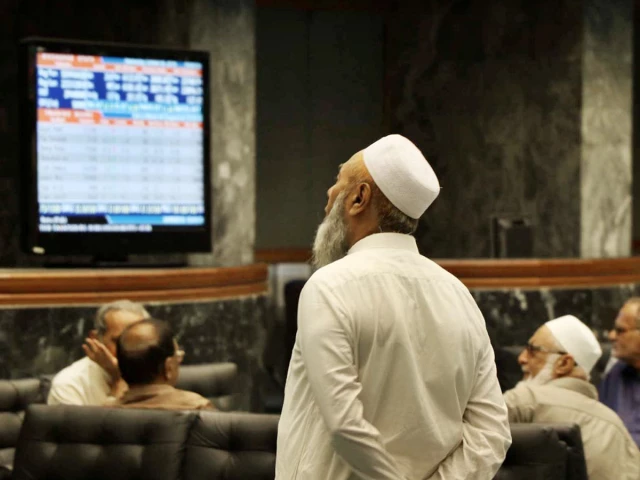Business
McDonald’s U.S. boss puts focus on ‘value and affordability’ as consumer spending splits

McDonald’s Meal Deal photographed in Washington, D.C., on Aug. 26, 2024.
Scott Suchman | The Washington Post | Getty Images
McDonald’s leadership is urging operators to stay the course on value offerings as the competition for consumers plays out across the restaurant space.
In a memo to U.S. operators following the company’s third-quarter earnings, McDonald’s U.S. President Joe Erlinger said the brand was “moving in the right direction” as it continues a more-than-yearlong push on value.
“Amid industry pressures, dynamic change, and aggressive competition, winning the fight for contracting traffic means staying customer-obsessed,” Erlinger wrote in the memo, which was viewed by CNBC. The company did not immediately respond to request for comment.
On Wednesday, McDonald’s reported earnings per share and revenue that came in below Wall Street expectations, but its same-store sales were a bright spot, posting positive growth across all segments.
U.S. same-store sales increased more than anticipated, up 2.4%, thanks to a boost from the $2.99 Snack Wrap launch and the introduction of its Extra Value Meals, which Erlinger said drew week-to-week growth.
“While we maintained a positive comp guest count gap, overall [guest counts] continue to decline– underscoring the need for disciplined pricing, value, and affordability,” he wrote in the memo.
Erlinger said the company has “the right plan in place” and said it was poised for a strong fourth quarter, including the benefit of annual comparisons to last year’s E. coli outbreak that dented burger sales.
“We still need to keep our foot on the gas– staying focused on the customer and what we can control,” he said.
CEO Chris Kempczinski told analysts this week that the fast-food chain is seeing signs of a bifurcated consumer base among quick-service restaurants.
He noted “QSR traffic from lower-income consumers declining nearly double-digits in the third quarter, a trend that’s persisted for nearly two years.
“In contrast, QSR traffic growth among higher-income consumers remains strong, increasing nearly double-digits in the quarter. We continue to remain cautious about the health of the consumer in the U.S. and our top international markets, and believe the pressures will continue well into 2026,” he said.
In a separate memo to global operators, Kempczinski said the brand will continue to focus on “sharpening value leadership to meet evolving consumer expectations and increase traffic.”
He added McDonald’s will be “investing in high-potential menu categories– especially Chicken and Beverages– to stay competitive and drive growth.”
McDonald’s is currently testing beverages in 500 restaurants across Wisconsin and Colorado that draw on learnings from its now-shuttered beverage concept, CosMc’s.
Business
Logistics IPO: Yatayat Corporation files Sebi papers to raise funds; growth surge puts road freight firm in focus – The Times of India

Logistics and transportation services provider Yatayat Corporation India Ltd has filed draft papers with markets regulator Sebi to raise funds through an initial public offering, as the road freight segment continues to see strong demand, PTI reported.According to the draft red herring prospectus (DRHP), the proposed IPO will comprise a fresh issue of up to 77 lakh equity shares along with an offer for sale (OFS) of up to 56 lakh equity shares by a promoter, taking the total offer size to as many as 1.33 crore shares.The company said proceeds from the fresh issue will be used primarily to meet working capital requirements and for general corporate purposes.Yatayat Corporation operates in the road logistics space, with a focus on Full Truck Load (FTL) transportation, offering point-to-point freight movement across major logistics corridors in the country. Its operations are supported by a network of 34 branches and one warehouse spread across 12 states.The company services a diversified client base spanning agriculture and agri-inputs, building materials and construction, chemicals and allied industries, energy and power, engineering and industrial manufacturing, IT and technology solutions, metals and mining, textiles and apparel, as well as other industrial and consumer segments.On the financial front, Yatayat Corporation reported revenue from operations of Rs 448.13 crore in FY25, up from Rs 348.34 crore in FY24. Profit after tax rose to Rs 30 crore in FY25, compared with Rs 15 crore in the previous financial year.Unistone Capital has been appointed as the sole book-running lead manager to the issue, the draft papers showed.
Business
WH Smith to claw back £1.5m from ex-bosses after accounting scandal

WH Smith is to claw back around £1.5 million in overpaid bonuses from former bosses following an accounting blunder at the retail firm’s US arm.
The travel retail specialist confirmed last week it is being investigated by the UK’s financial watchdog after it overstated profits for its North American business by as much as £50 million due to issues with its audit process.
Carl Cowling resigned as WH Smith’s chief executive last month after a report by Deloitte confirmed the accounting problems.
The company said on Wednesday in its annual report that annual bonus payments for Mr Cowling and former finance chief Robert Moorhead have been recalculated for 2023 and 2024.
It has also recalculated the payment of long-term share bonuses from a 2021 scheme for executives.
WH Smith said it overpaid Mr Cowling £516,000 in cash and 60,182 deferred shares worth £374,933 based on the latest closing price for the firm.
It overpaid Mr Moorhead by £372,000 in cash and £272,493 worth of shares.
It said it would now seek to “claw back” both of these payments from the former bosses.
WH Smith also confirmed that it did not pay annual or long-term bonuses to Mr Cowling for the past financial year.
As a result, his total pay deal tumbled to £724,000 for the year to August 2025, from £2.71 million for the same period a year earlier.
The retailer told investors last week that it had kickstarted a remediation plan, which aims to strengthen its governance and controls, ensure processes are aligned across the group, and enact cultural change involving training and monitoring.
Its board is currently searching for a permanent group chief executive.
WH Smith is now focused solely on its 1,300 shops in global travel locations, including at airports and train stations, after selling its high street chain of about 480 shops to Hobbycraft owner Modella Capital in June.
As part of the deal, the WH Smith name is disappearing from British high streets and being replaced by brand TGJones.
The slimmed-down business reported a pre-tax profit of £108 million for the year to the end of August, excluding what it deems one-off costs.
Business
RBI Postpones Phase 2 Cheque Clearing, Modifies Presentation And Confirmation Hours

RBI Guidelines For Cheque Clearing Time: The Reserve Bank of India (RBI) said on Wednesday that it has delayed the rollout of Phase 2 of the faster cheque clearance system by banks. The new phase was earlier set to begin on January 3, 2026. The RBI also announced changes to cheque processing timings. Cheques can now be presented between 9 am and 3 pm, while banks will have time from 9 am to 7 pm to confirm or reject them.
“Implementation of phase 2 is being postponed until further notice, to allow more time to banks to streamline their processes,” according to the RBI statement. Phase 1 of the system, which was implemented earlier this year, will continue to operate as usual.
RBI Phase 2 Guidelines
Under the proposed Phase 2 guidelines, banks are required to clear or reject any cheque deposited over the counter within just three hours. This is expected to be a major relief for customers, making payments faster and more efficient once the process starts.
RBI Rolls Out Cheque Truncation System
The RBI introduced continuous clearance under the Cheque Truncation System (CTS) to speed up and simplify cheque clearing. Instead of the old batch system, cheques are now processed using digital images and electronic data. This means banks no longer need to physically transfer cheques, making the process faster and more efficient.
RBI Phase 1 Single Presentation Window
From October 4, 2025, Phase 1 brought in a single, continuous cheque presentation window during the day. Instead of waiting for fixed clearing batches, banks now scan cheques as they receive them and send the cheque images along with MICR data to the clearing house.
Once the drawee bank gets the cheque image, it checks the details and sends an approval or rejection electronically. If the bank does not respond by the end of the confirmation window, the cheque is automatically treated as approved and settled.
RBI Phase 2 Plan For Cheque Clearance
Phase 2, which was planned to start from January 3, 2026, was meant to further expedite the clearance of cheques to ensure greater convenience for bank customers. Banks would get just three hours to approve or reject a cheque after receiving its image.
If a bank failed to respond within this time, the cheque would be automatically approved and settled. This would have pushed banks to process cheques more quickly and helped customers get their money sooner. However, since phase 2 has been deferred, cheque clearing will continue under the present Phase 1 system, which does not have to follow the three-hour deadline. (With IANS Inputs)
-

 Fashion7 days ago
Fashion7 days agoIndonesia’s thrift surge fuels waste and textile industry woes
-

 Business7 days ago
Business7 days agoBP names new boss as current CEO leaves after less than two years
-

 Tech7 days ago
Tech7 days agoT-Mobile Business Internet and Phone Deals
-

 Sports7 days ago
Sports7 days agoPKF summons meeting after Pakistani player represents India in kabaddi tournament
-

 Entertainment7 days ago
Entertainment7 days agoIndia streamlines visa rules in boost for Chinese professionals
-

 Sports7 days ago
Sports7 days agoUWCL grades for all 18 teams: Leuven get A+; Barça an A-, PSG fail
-

 Business1 week ago
Business1 week agoFord to record $19.5 billion in special charges related to EV pullback
-

 Entertainment7 days ago
Entertainment7 days agoRadiation fears rise after cracks found in $2 billion Chernobyl shield












